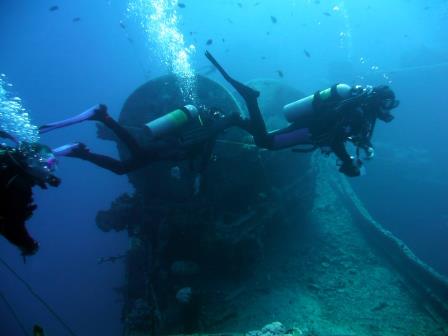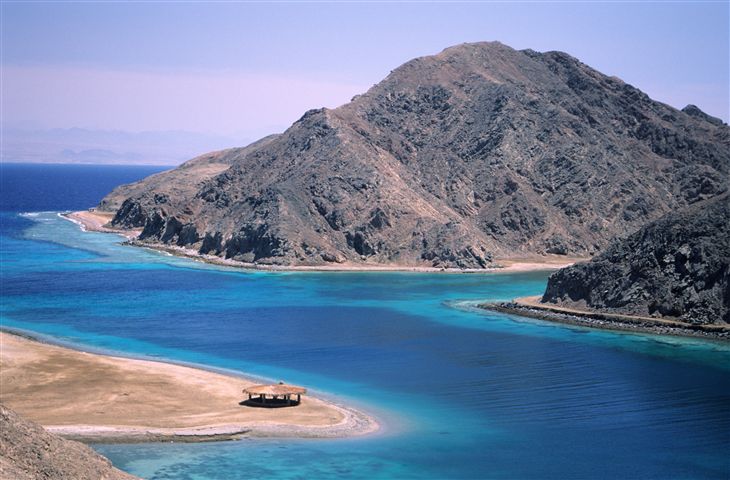Sharm el Sheikh Dive Sites
Sharm el Shiekh offers some of the worlds best diving.The crystal clear waters are suitable for all ages and diving abilities. With coral reefs, abundance of colourful marine life, world war II and other historical wrecks, drop offs, walls and fast drift dives are all available.
Sharm el Sheikh dive sites cover a vast area from the Straits of Tiran in the north to the famous SS. Thistlegorm and the Dunraven in the south in the Gulf of Suez. With so many dive sites available and all within easy reach of our jetty, we can offer you a huge variety; from pretty shallow coral gardens to dramatic drop-offs.
Sharm el Sheikh dive sites offer considerably diverse topography. The sites on the main coast feature a fringing reef which extends from about 10m – 30m out from the beach and is about one meter in depth at high tide.
After the fringing reef there is normally a drop-off either as a dramatic wall or to a shallow sandy bay dotted with more coral pinnacles. Care needs to be taken in crossing the reef if scuba diving by shore and good buoyancy control is needed during the dive.
The sights with the word ‘Ras’ which in Arabic means head, often have stronger tidal currents; Ras Gamilla, Ras Nasrani, Ras um Sid etc. With these sites most of the dives are conducted as drift dives or semi-drift. Vigilant buoyancy control is a must as in some cases there is no visible seabed.
First day dive sites include the beautiful coral garden of Temple or Ras Katy in the south or The Gardens in the north. These sites have virtually no current and have very calm conditions due to their sheltered location – making them perfect places for first day buoyancy checks and Red Sea orientation.
A few of our favourites

Straights of Tiran
This dive location can be found in the middle of the Gulf of Aqaba approximately one and a half hours by boat from Naama Bay.
Only accessible by boat it is still well preserved compared to some of the local dive sites on the coastline. Unpredictable currents around the reefs and steep drop offs require good diving skills. Guests diving with us will never be diving this spot on their first dive day.
Four coral reefs lined up in a row are visible on the surface, actually the top of a huge coral reef back growing out of the depth.
These reefs, named after British cartographers (Gordon, Woodhouse, Thomas, Jackson), are world famous for its extraordinary diversity of corals. Sights of sharks, turtles and other big fish are possible.
Wreck remains on the outside reefs stand as a warning to ship in the narrow straits.

Ras Mohamed Marine Park
Ras Mohammed National Park and Marine reserve is an outstanding area of natural beauty on land and underwater. The area is considered significant for Marine biologists due to the diverse range of marine and coral life sustained by the two bodies of water that merge here; The Gulf of Suez and The Gulf of Aqaba.
The park is protected by marine park laws which all divers must abide by to ensure the survival of such a delicate eco-system. All of the dives are accessible by boat and a couple can be dived by shore. A daily boat trip to Ras Mohammed National Park is a must on any SCUBA diving holiday to Sharm el Shiekh.
Like the Straits of Tiran some of the dive sites are challenging with unpredictable currents and steep drop offs. To get the most out of these amazing dives, the Red Sea College prefer guests to dive local sites first and that all divers visiting the park have good buoyancy control.

Wrecks Around Sharm
Thistlegorm
The Thistlegorm was built in 1940 as a merchant vessel being 126m long and 17.5m wide. It was commandeered by the navy during the World War II.
In October 1941 the vessel had made its way round Africa and into the Red Sea. Loaded down with supplies destined for North Africa. It anchored in the holding area before moving towards the Suez Canal.
The anchorage is 5 miles wide between the Sinai Peninsula and the reef ‘Shaab Ali’ where the sea bottom is flat at around 30m.
In the early hours of the 6th October two German bombers from Crete found her and other vessels anchored there. The bombs landed in number four hold, which contained ammunition, ripping the stern section off and folding some of the deck back on itself. The ship went down and landed upright.
The wreck was first dived by Cousteau in the 50’s. However its position was not rediscovered until the early 90’s. Since then it has become one of the worlds best wrecks to dive. The holds are open and easily accessed showing the full range of cargo carried. Like trucks, motorbikes, plane wings and engines, trains and tenders, Wellington boots and waders!!, ammunition, armoured vehicles.

Dunraven
This wreck of a British Steamer is on the Southern edge of Sha’ab Mahmoud which is also known as Beacon Rock as the wreck is directly below the South Cardinal Beacon. It is about another hour boat ride past Ras Mohammed and is prone to the weather conditions. Once at the reef there is some protection from the waves but it can still be a little rough.
The Dunraven was built in 1873 in Newcastle and hit the reef in 1876. It has sunk in 30m of water right next to the reef wall and is completely upside down in two sections. The length is about 80m and it’s about 10m wide.
The stern section is in about 29m to the sand and is open in places for those qualified to enter. This leads to a swim through by the side of the ship’s boiler and out where the wreck has broken in half. The exit being usually filled with glass fish in their thousands. The bow section is in shallower water with loads of places to stick your head into, but nowhere to get in.
After the bow section the dive is usually done by fining over the hull which is covered in coral and then moving onto the reef wall and the shallows to finish the dive.
